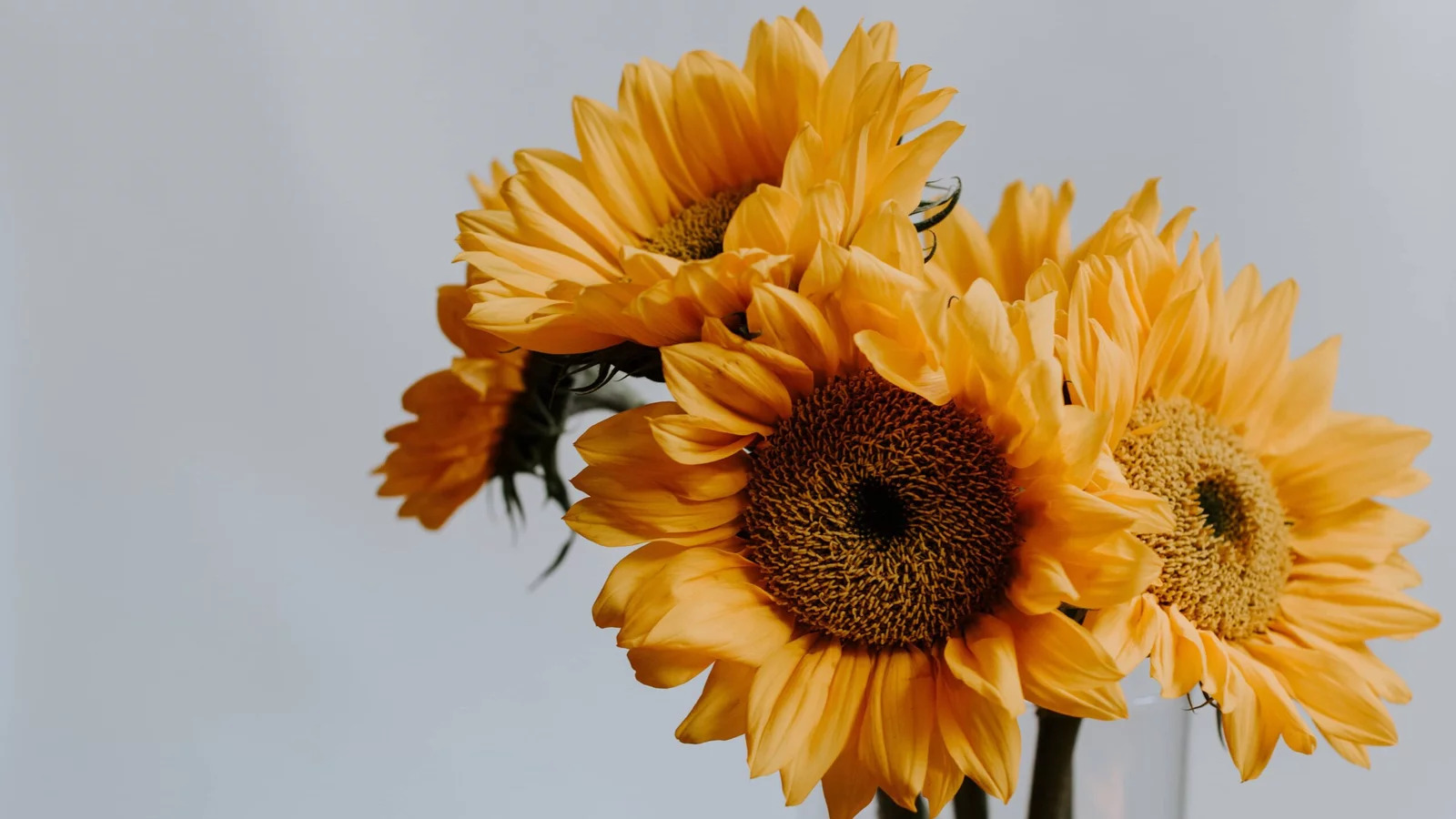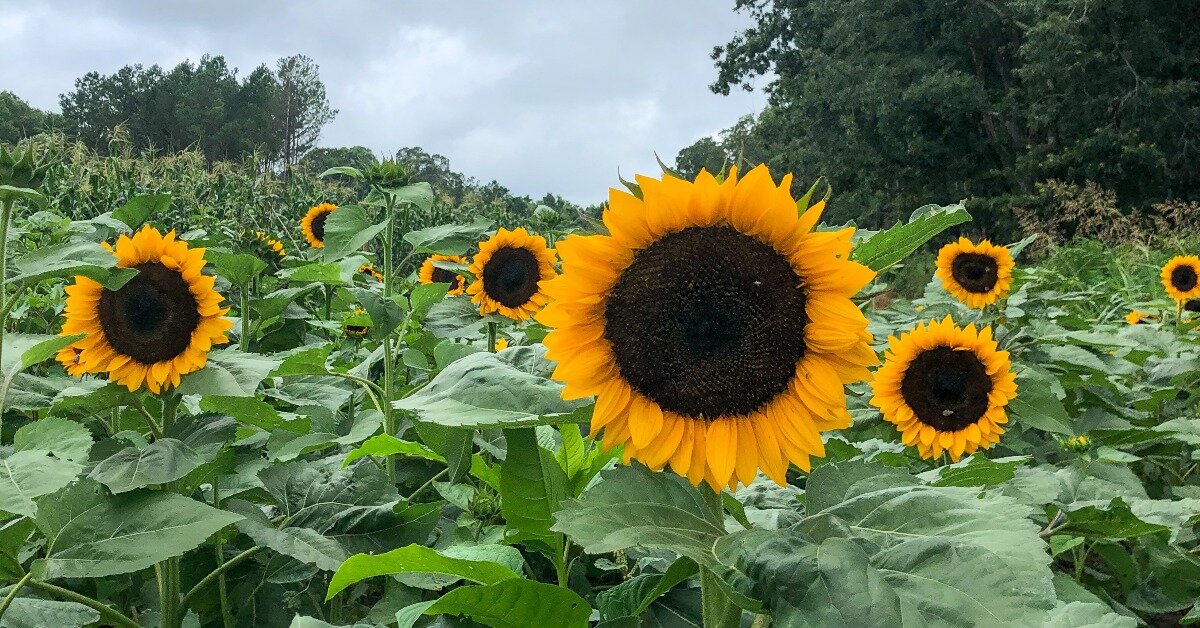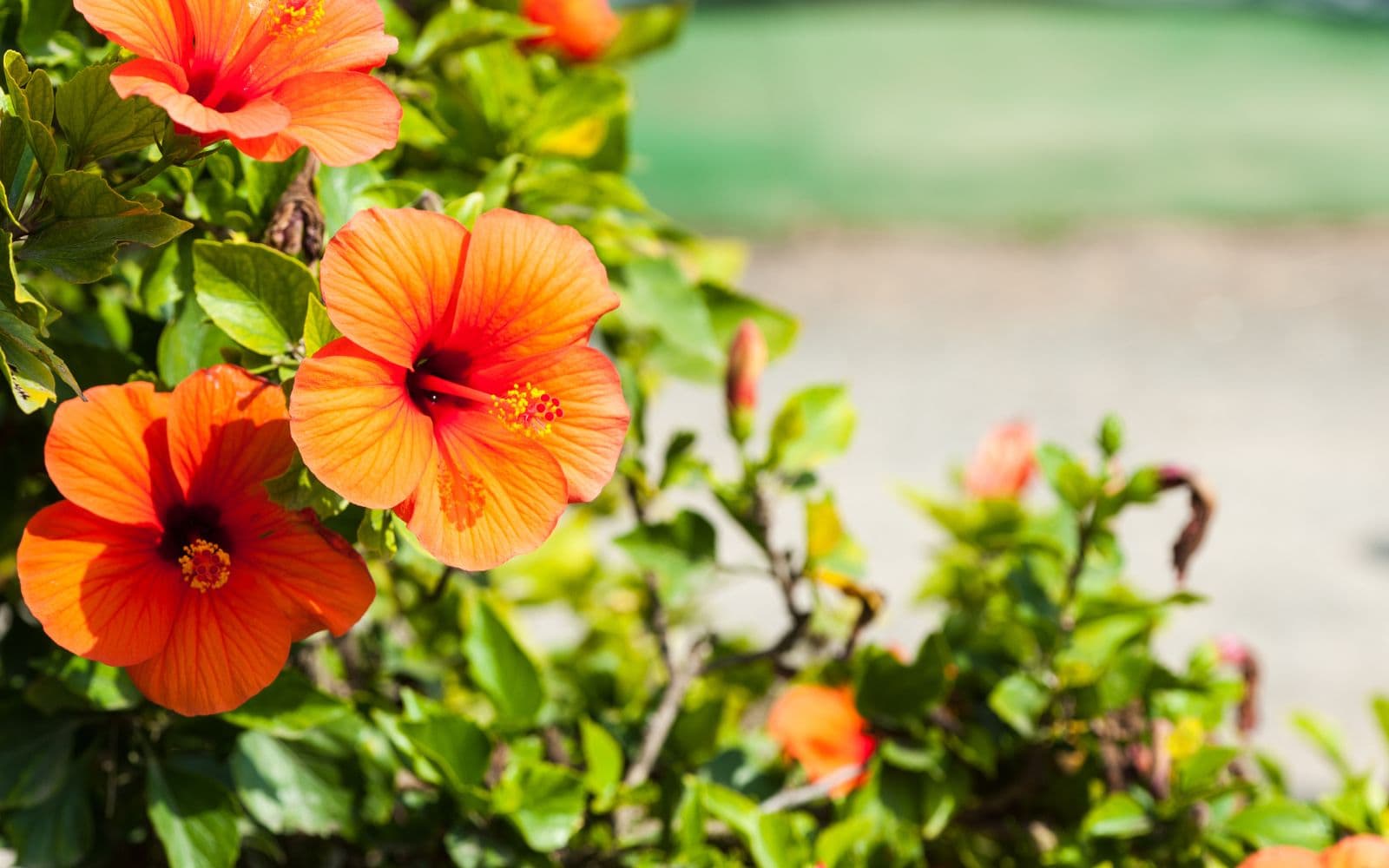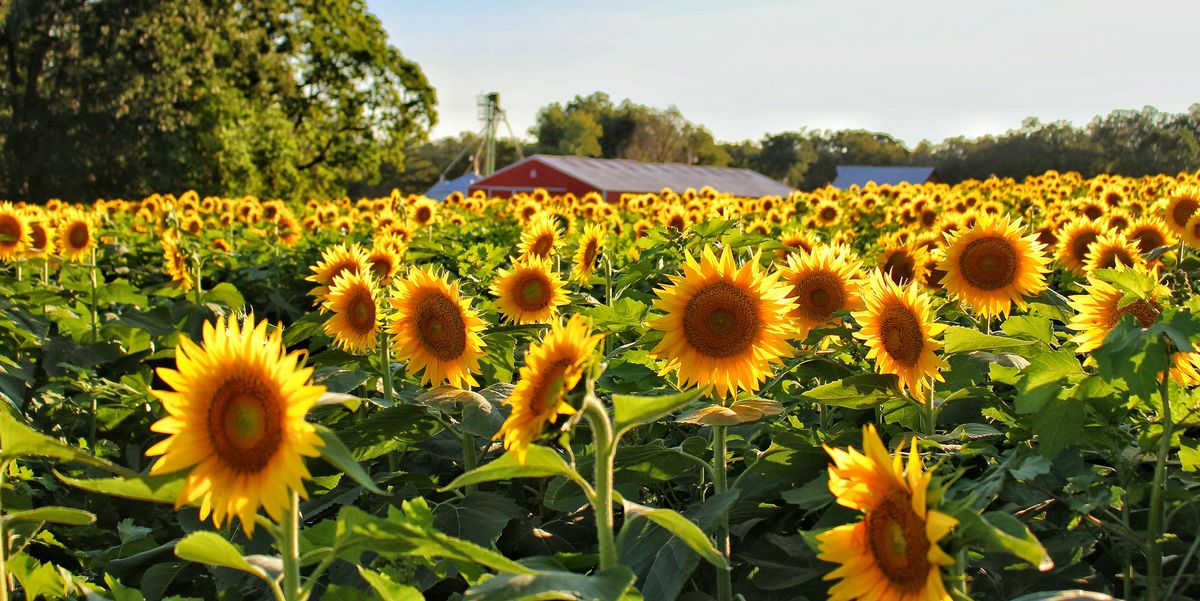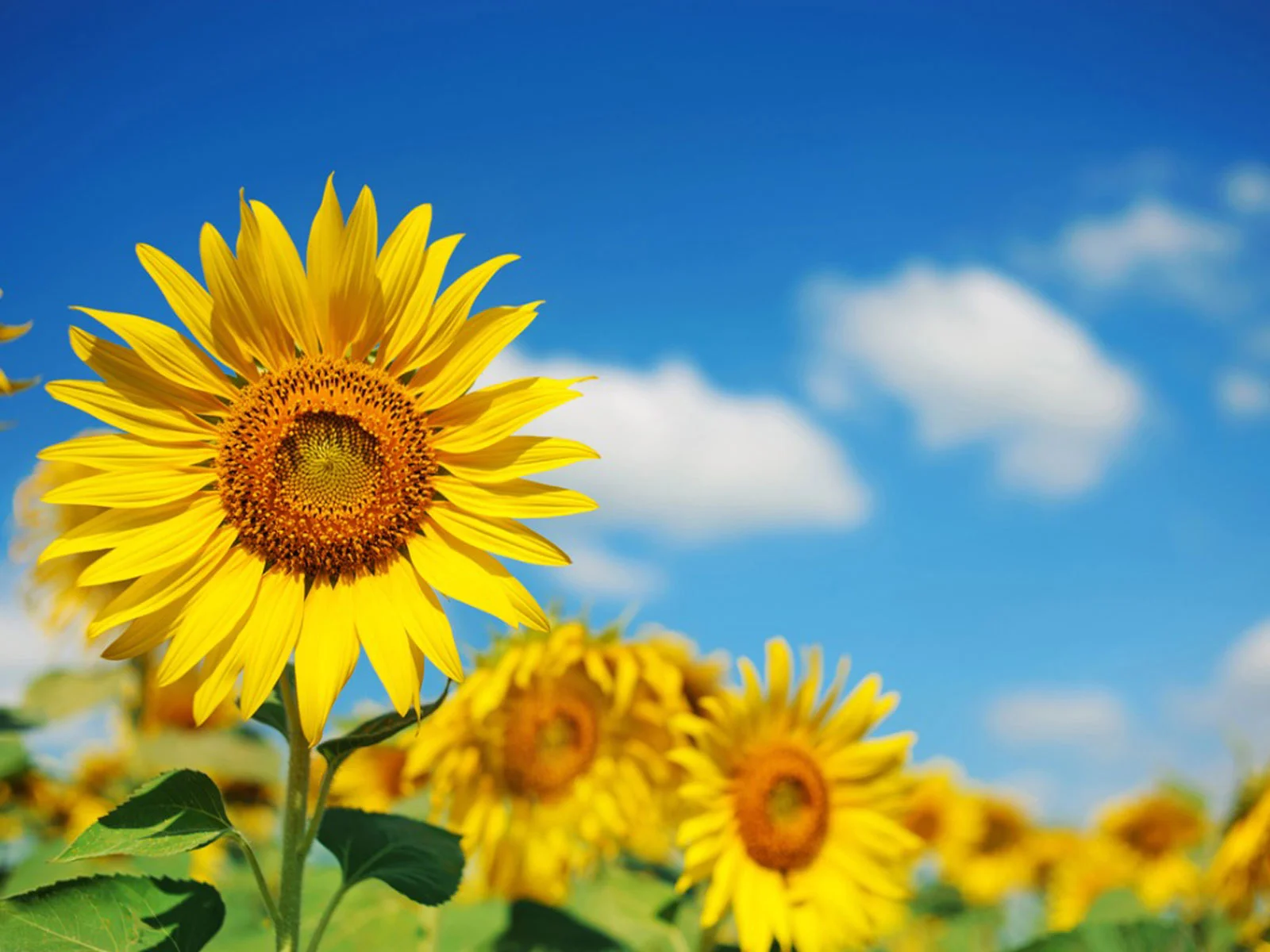Home>Types of Gardening>Ornamental Gardening>Where Are Sunflowers Native


Ornamental Gardening
Where Are Sunflowers Native
Modified: January 22, 2024
Discover the origins of sunflowers and their native habitats. Explore the history and benefits of growing sunflowers in your ornamental gardening endeavors.
(Many of the links in this article redirect to a specific reviewed product. Your purchase of these products through affiliate links helps to generate commission for Chicagolandgardening.com, at no extra cost. Learn more)
Table of Contents
Introduction
Sunflowers, with their vibrant yellow petals and towering heights, are one of the most beloved flowers in the world of ornamental gardening. These stunning blooms have captured the hearts of gardeners and enthusiasts alike for centuries, not only for their beauty but also for their fascinating history and cultural significance.
In this article, we will delve into the world of sunflowers, exploring their origins, natural habitats, and widespread cultivation. From their humble beginnings in ancient cultures to their global presence today, sunflowers have a rich and storied past that is worth exploring.
Whether you are a gardening enthusiast looking to add a touch of sunshine to your yard or simply curious about the origins of these magnificent flowers, this article will provide you with a comprehensive understanding of where sunflowers are native and how they have become ingrained in various cultures around the world.
So, let us embark on a journey through time and space to discover the fascinating story of sunflowers and their remarkable journey across continents.
A Brief History of Sunflowers
The history of sunflowers dates back thousands of years, with evidence of their cultivation found in ancient civilizations around the world. The wild ancestor of the sunflower, Helianthus annuus, is believed to have originated in North America, specifically in what is now modern-day Mexico and the southern United States.
Ancient Native American civilizations, such as the Aztecs and Incas, revered sunflowers for their beauty and versatility. They cultivated sunflowers for their seeds, which were not only a dietary staple but also used in religious ceremonies. Sunflower oil was extracted for cooking, and the flowers themselves were used for decorative purposes.
The popularity of sunflowers spread beyond the Americas when European explorers and settlers encountered them during their explorations and colonizations. In the 16th century, sunflowers made their way to Europe, where they quickly gained popularity among botanists and gardeners.
During the 18th century, Russian tsar Peter the Great introduced sunflowers to Russia, where they flourished in the fertile soils of the region. Russian farmers soon discovered the economic potential of sunflowers and began mass cultivating them for their abundant oil-rich seeds.
In the 19th century, sunflowers took on a new role as a symbol of hope and resilience during the Impressionist art movement. Artists like Vincent van Gogh and Claude Monet immortalized sunflowers in their iconic paintings, capturing their vibrant colors and unique forms.
Today, sunflowers are recognized worldwide for their beauty and symbolism. They are often associated with positivity, happiness, and bringing warmth to any setting. From their humble beginnings in the Americas to their global presence today, sunflowers have carved a place for themselves in the hearts of people from all walks of life.
Now that we have explored the fascinating history of sunflowers, let us dive deeper into their natural habitat and where they are native.
Sunflowers in Ancient Cultures
The sunflower has a long and significant history in various ancient cultures, where it held deep cultural and symbolic meanings. One such civilization that revered the sunflower was the Native American cultures of North and Central America.
The Native Americans, particularly the Aztecs and Incas, considered the sunflower to be a sacred plant. They believed that sunflowers represented the sun god and viewed them as a symbol of fertility, sustenance, and spiritual significance. Sunflowers played a central role in religious ceremonies, and their bright petals and golden center were often used as offerings or adornments.
In addition to their religious significance, Native American tribes also cultivated sunflowers for practical purposes. They recognized the nutritional value of sunflower seeds, which were rich in protein and important for their survival. Sunflower seeds were ground into flour, roasted, or made into a thick paste that was used in cooking.
The Native Americans were also aware of the medicinal properties of sunflowers. They used various parts of the plant, including the leaves, petals, and roots, to treat ailments like snake bites, respiratory issues, and infections.
The influence of sunflowers expanded beyond the Americas when they were introduced to Europe by Spanish explorers in the 16th century. European societies quickly embraced sunflowers for their beauty and versatility. They were grown in gardens and estates, with nobility and aristocracy displaying them as a symbol of wealth and sophistication.
Moreover, sunflowers became a popular motif in art and design during the Renaissance period. They were featured in paintings, tapestries, and decorative arts, representing beauty, light, and vitality. Sunflowers were seen as a reflection of the divine order in nature and were often depicted alongside other symbolic elements in artwork.
As we can see, sunflowers held great significance in ancient cultures, symbolizing spirituality, sustenance, and beauty. Their importance in religious ceremonies, as well as their practical uses, highlight the profound impact they had on the lives of people throughout history.
Now that we have explored the role of sunflowers in ancient cultures, let us turn our attention to their natural habitats and where they thrive in the wild.
The Natural Habitat of Sunflowers
Sunflowers, scientifically known as Helianthus annuus, are native to North America, particularly the regions of present-day Mexico and the southern United States. They are well adapted to grow in areas with abundant sunlight and warm temperatures. In the wild, sunflowers typically thrive in open prairies, along roadsides, and in disturbed areas such as abandoned fields.
One of the key characteristics of sunflowers is their ability to track the sun throughout the day. This phenomenon, known as heliotropism, allows their flower heads to face the sun, maximizing their exposure to sunlight. This behavior is most prominent in young sunflowers, with mature plants usually facing east to attract pollinators.
Regarding soil preferences, sunflowers are not overly particular and can grow in various soil types. However, they tend to perform best in well-draining soils with good fertility. They can tolerate slightly acidic to mildly alkaline soil conditions.
In terms of climate, sunflowers are considered warm-season plants, thriving in regions with long and hot summers. They require a minimum of 6-8 hours of direct sunlight per day to develop and bloom properly. Additionally, they have a moderate tolerance to drought but benefit from regular watering, especially during periods of prolonged dryness.
Although sunflowers are native to North America, they have successfully been adapted and cultivated in many regions around the world. Today, sunflowers are grown on every continent except Antarctica, highlighting their adaptability and popularity as an ornamental and agricultural plant.
As we move forward, we will explore the presence and cultivation of sunflowers in different regions of the world, starting with their significance in North America, their native habitat.
Sunflowers in North America
North America is the native habitat of sunflowers, and they have played a significant role in the cultural and agricultural history of the region. Native American tribes cultivated and revered sunflowers long before the arrival of European settlers.
The Native Americans used sunflowers for various purposes. They not only harvested the nutritious seeds for food but also utilized other parts of the plant for medicinal and ceremonial purposes. Sunflower seeds were ground into flour and used as a staple in their diet, providing a valuable source of protein and essential fatty acids.
In addition to their practical uses, sunflowers held spiritual significance for Native American tribes. They believed that the sunflower symbolized the sun and its life-giving properties. It represented fertility, abundance, and the connection between the earthly and spiritual realms.
When European explorers arrived in North America, they were captivated by sunflowers’ beauty and utility. They brought sunflower seeds back to Europe, where they quickly gained popularity among botanists and gardeners. Throughout the years, sunflowers have been bred and cultivated to bring about stunning variations, including different colors, sizes, and petal arrangements.
In modern times, sunflowers remain a beloved flower in North America. They are grown in gardens for their aesthetic appeal and are often used in floral arrangements and landscaping projects. Furthermore, the agricultural industry in North America recognizes the economic potential of sunflowers. The seeds are harvested for oil extraction, which is used for cooking, cosmetics, and industrial purposes.
North America continues to be a significant producer of sunflowers, particularly in the United States. States such as Kansas, North Dakota, and South Dakota are known for their vast sunflower fields, contributing to the global supply of sunflower seeds and oil.
With their deep-rooted history in Native American cultures and continued presence in modern-day agriculture and horticulture, sunflowers hold a special place in North America. They serve as a reminder of the region’s rich heritage and the enduring beauty and versatility of these magnificent flowers.
Next, we will explore the presence and cultivation of sunflowers in Europe, where they were introduced and gained popularity in the 16th century.
Sunflowers in Europe
When sunflowers were introduced to Europe by Spanish explorers in the 16th century, they quickly gained popularity among botanists and gardeners. The vibrant and distinctive appearance of sunflowers captivated Europeans, and they were soon cultivated in gardens and estates throughout the continent.
In Europe, sunflowers were seen as a symbol of wealth and sophistication. They were displayed in noble gardens and became a status symbol among aristocracy. The tall stalks and large flower heads made sunflowers an impressive addition to formal landscaping.
Aside from their ornamental value, European societies recognized the practical uses of sunflowers. The seeds were pressed to extract oil, which served as a versatile cooking oil and a source of nutrition. Sunflower oil quickly gained popularity due to its light flavor and high smoking point.
Throughout the centuries, sunflowers have been bred and hybridized in Europe, leading to the development of new cultivars with varied colors, sizes, and patterns. Today, there are sunflower varieties with multiple flower heads, as well as dwarf varieties suitable for container gardening.
In the world of art, sunflowers gained prominence during the Impressionist movement in the 19th century. Artists like Vincent van Gogh and Claude Monet were captivated by the beauty of sunflowers and painted them in their iconic works. Van Gogh’s series of sunflower paintings, in particular, have become globally recognized and celebrated.
Modern-day Europe continues to cultivate sunflowers for both ornamental and agricultural purposes. Fields of sunflowers can be found in countries like France, Italy, and Spain, creating picturesque landscapes during the summer months.
Furthermore, sunflower oil remains a popular cooking oil in many European cuisines. It is valued for its light and neutral flavor, making it suitable for a wide range of dishes.
Overall, sunflowers have had a significant impact in Europe, both culturally and economically. They have left an indelible mark on art, horticulture, and the culinary world, embodying beauty, versatility, and European appreciation for nature’s splendor.
Now, let’s explore the presence and cultivation of sunflowers in Asia, where they have become an integral part of the agricultural landscape.
Sunflowers in Asia
Sunflowers have become an integral part of the agricultural landscape in Asia, with various countries across the continent cultivating these vibrant flowers for both their beauty and economic benefits. Sunflowers were introduced to Asia during the 16th century, primarily through trade routes and colonization.
One of the significant cultivators of sunflowers in Asia is China. Sunflowers are grown in various regions of China, including Heilongjiang, Inner Mongolia, and Xinjiang. These areas provide the ideal climate and fertile soils for sunflower cultivation. China is not only a major producer of sunflower oil, but sunflowers also hold cultural significance in the country. They symbolize vitality, happiness, and good luck, and are often used in celebrations and decorations.
India is another country in Asia where sunflower cultivation is widespread. Primarily grown for the production of sunflower oil, India has seen a significant increase in sunflower acreage in recent years. The states of Karnataka, Maharashtra, and Andhra Pradesh are major sunflower-growing regions in the country. Sunflowers are also popular as ornamental plants in India, adorning gardens and public spaces with their vibrant colors.
Kazakhstan, located in Central Asia, has emerged as a leading producer of sunflowers in the region. The vast expanses of the Kazakhstan steppes provide the ideal conditions for sunflower cultivation. The country’s rich agricultural heritage and favorable growing conditions have made sunflowers a significant crop for farmers, contributing to the country’s economy.
Other Asian countries such as Russia, Ukraine, and Turkey also have substantial sunflower production. These countries utilize sunflowers for both oil extraction and as an agricultural cash crop.
Furthermore, sunflowers have gained popularity in Japan and South Korea as ornamental flowers. The unique and cheerful appearance of sunflowers makes them a favorite choice for flower arrangements and adding a burst of color to landscapes and gardens.
The cultivation of sunflowers in Asia, whether for oil production or ornamental purposes, continues to flourish. These magnificent flowers have become an essential part of the agricultural and cultural fabric of the continent, symbolizing prosperity, happiness, and a connection to nature.
Next, let’s explore the presence and significance of sunflowers in Africa, where they have made their mark in various countries.
Sunflowers in Africa
Sunflowers have a growing presence in Africa, with several countries on the continent embracing the cultivation of these vibrant flowers for both their economic and ornamental value. Sunflowers were introduced to Africa during the colonial era and have since become an integral part of the agricultural landscape in many regions.
South Africa is one of the leading producers of sunflowers in Africa. The country’s sunny climate and fertile soils create favorable conditions for sunflower cultivation. The Mpumalanga and Free State provinces are known for their extensive sunflower fields, contributing significantly to the country’s domestic and international sunflower oil production.
Zimbabwe is another African nation where sunflowers are cultivated on a large scale. Sunflower farming has gained popularity among smallholder farmers as a cash crop, providing a source of income and food security. The crop also plays a vital role in the country’s rural economy and agricultural development.
In East Africa, countries like Kenya and Tanzania have seen an increase in sunflower cultivation. Farmers in these regions have recognized the economic potential of sunflowers and are embracing their farming techniques and practices to maximize yields. Additionally, sunflowers are being utilized for oil extraction and as a source of animal feed in these countries.
Aside from their economic significance, sunflowers have also found their place in African art and culture. In many African countries, sunflowers are seen as a symbol of happiness, beauty, and abundant harvests. They are frequently incorporated into traditional ceremonies, festivals, and decorations, adding a vibrant touch to cultural celebrations.
Moreover, sunflowers are becoming increasingly popular as ornamental plants in Africa. Their cheerful and striking appearance makes them a favorite choice for beautifying gardens, parks, and public spaces. Sunflower displays and exhibits attract tourists and locals alike, showcasing the beauty and versatility of these remarkable flowers.
As sunflower cultivation continues to grow in Africa, it presents opportunities for economic development and sustainable agriculture. The versatility of sunflowers, from oil extraction to ornamental use, contributes to the continent’s agricultural diversity and cultural heritage.
Now that we have explored the presence and significance of sunflowers in Africa, let’s move on to their cultivation and impact in Australia.
Sunflowers in Australia
Australia, with its diverse climate and vast agricultural landscapes, has embraced the cultivation of sunflowers with remarkable success. Sunflowers were introduced to Australia in the late 19th century, and since then, they have become an important crop in various regions of the country.
The main regions in Australia known for sunflower cultivation are New South Wales, Queensland, and Victoria. These areas offer favorable growing conditions, including warm summers and well-draining soils. Australian farmers have embraced sunflowers as a cash crop, with the seeds being used for oil production and as a source of animal feed.
Sunflower oil extracted in Australia is renowned for its high-quality and purity. The oil is used extensively in cooking, baking, and salad dressings, as it adds a delicate flavor and enhances the nutritional profile of dishes.
Apart from their economic significance, sunflowers have also found a place in Australian gardens and landscapes. The vibrant and cheerful appearance of sunflowers makes them a popular choice for ornamental planting. Many Australian households and public spaces display sunflowers with pride, brightening up the surroundings and bringing a touch of nature’s beauty.
In addition to their ornamental value, sunflowers play a crucial role in supporting local ecosystems. The nectar-rich flowers attract various pollinators, including bees and butterflies, aiding in the pollination of other plants in the area.
Furthermore, sunflowers are often celebrated in Australian culture and events. They are a key feature in agricultural shows, festivals, and competitions, where growers proudly showcase their impressive sunflower varieties. Sunflower fields also attract tourists, providing stunning photo opportunities and a chance to experience the beauty of these towering flowers up close.
The cultivation of sunflowers in Australia not only contributes to the country’s agricultural diversity but also provides employment opportunities and promotes sustainability through the production of renewable resources.
With their sunny disposition and economic benefits, sunflowers have made their mark in the Australian agricultural and horticultural landscape, symbolizing resilience, beauty, and a connection to the country’s natural heritage.
Now that we have explored the presence and impact of sunflowers in Australia, let’s reflect on the fascinating journey of these flowers and the cultural significance they hold across various continents.
Conclusion
Sunflowers, with their vibrant colors and imposing presence, have a rich and fascinating history that spans continents and cultures. From their native habitat in North America to their global presence in Europe, Asia, Africa, and Australia, sunflowers have made a significant impact on agriculture, art, and cultural symbolism.
In ancient cultures, sunflowers held a sacred place, symbolizing fertility, sustenance, and spirituality. Native American civilizations revered these flowers and utilized them for both practical and ceremonial purposes. European societies embraced sunflowers for their beauty and status, incorporating them into formal gardens and art pieces during the Renaissance and Impressionist periods. Sunflowers have also become important cash crops, with their seeds used for oil extraction, animal feed, and consumption.
Today, sunflowers continue to be admired and cultivated worldwide. They bring a ray of sunshine to gardens, parks, and landscapes, filling them with their vibrant hues and attracting pollinators. Sunflowers have transcended their practical uses and have become an enduring symbol of positivity, happiness, and connection to nature.
As we reflect on the journey of sunflowers, we cannot deny the cultural, economic, and aesthetic significance they hold. Whether it is the vast fields of sunflowers in North America, the ornamental gardens of Europe, the agricultural landscapes of Asia, the cultural celebrations in Africa, or the sunny fields of Australia, sunflowers continue to captivate and inspire people from all walks of life.
So, next time you come across a sunflower, take a moment to appreciate its beauty and the remarkable story it carries. It is a testament to the resilience and the universal appeal of nature’s wonders.
